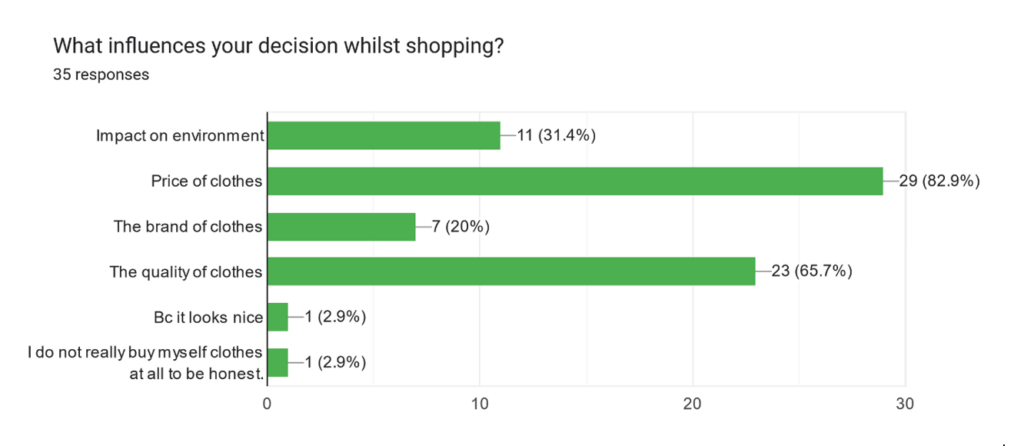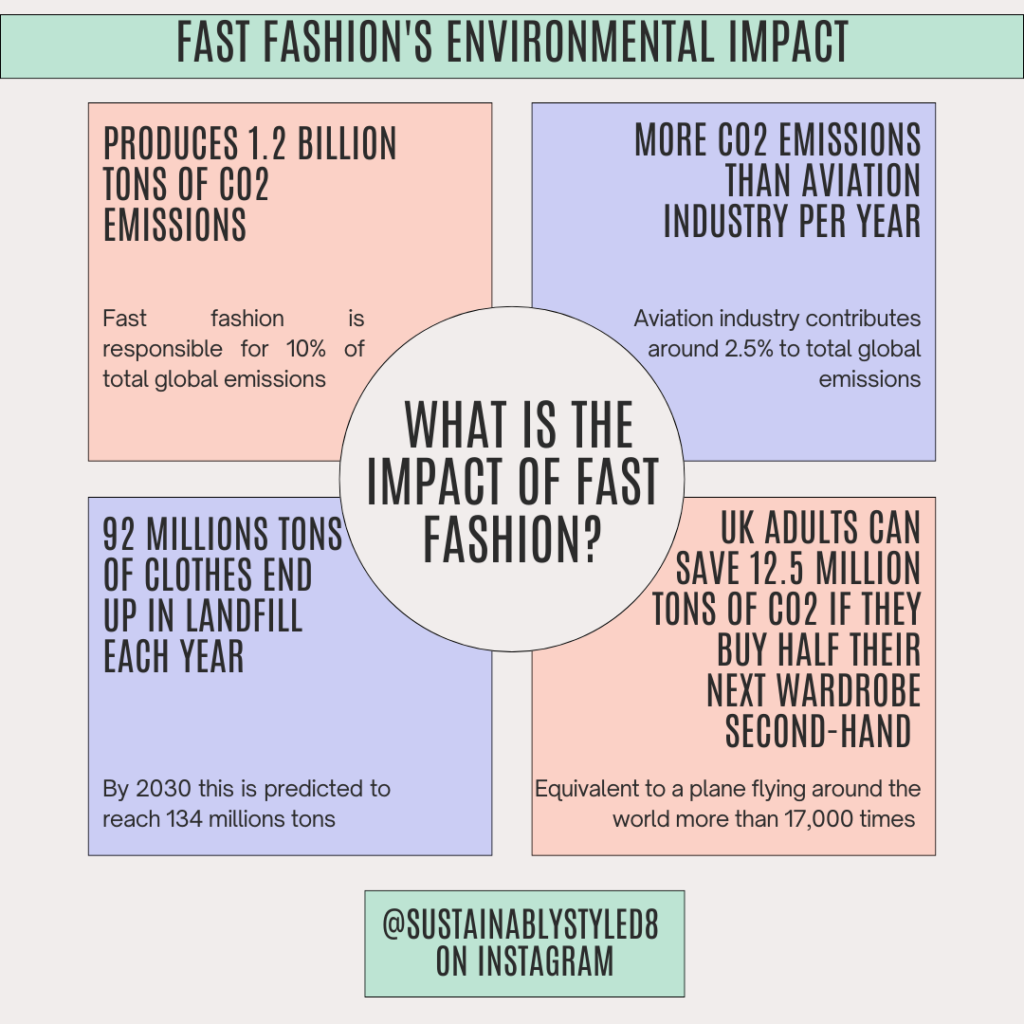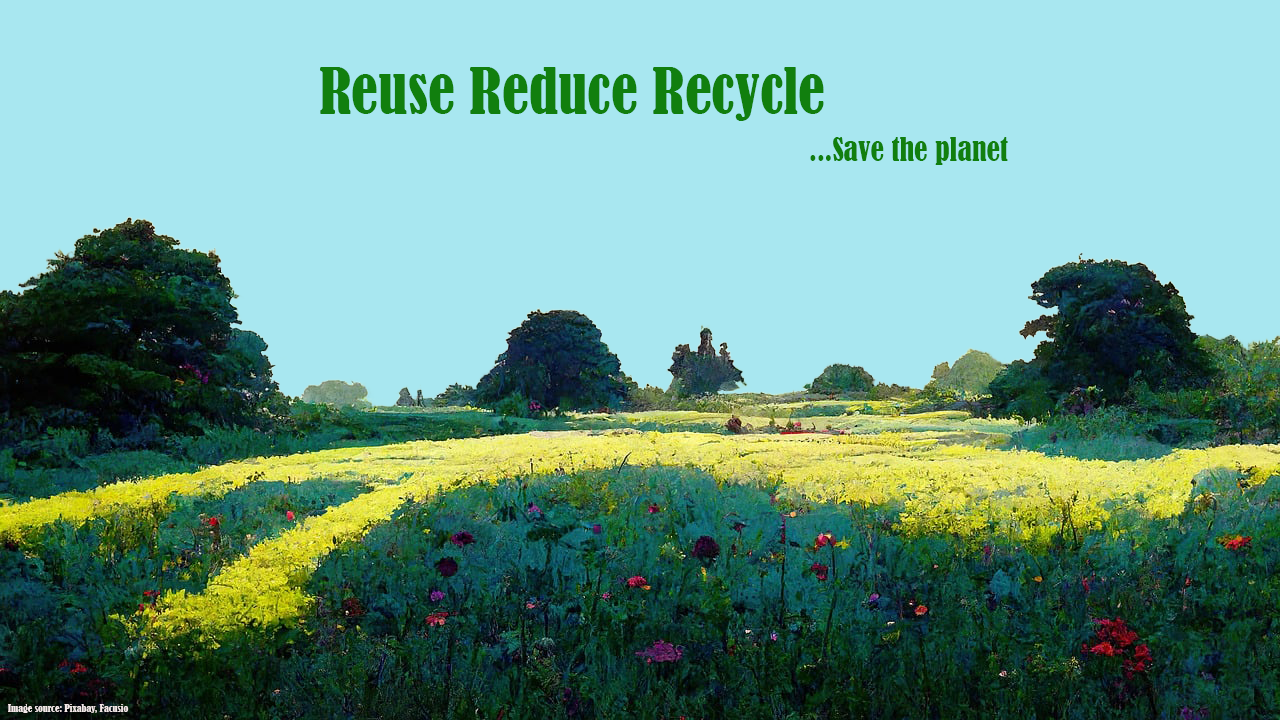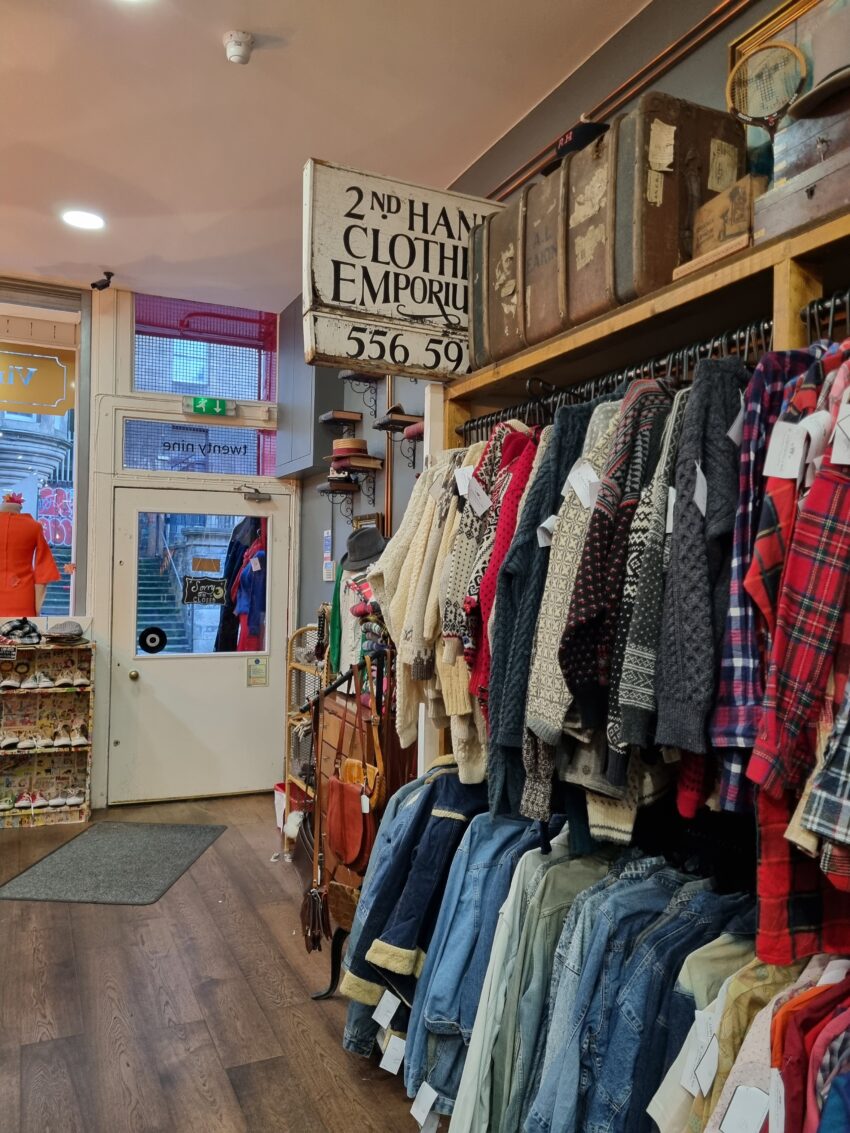Second-hand fashion industry has seen a rise in popularity over the past few years. Now more than ever people are turning to pre-loved clothing because of sustainability reasons.
What is second-hand?
Second-hand fashion industry is made up of clothes which have been donated by someone who previously owned those clothes. Other people can then buy these items, often for a cheaper price and assurance that they have helped the environment.
Second-hand clothes can be found both in online stores such as Vinted and Depop as well as in charity shops. Charity shops accept donations of old clothes (as well as other items such as books, games, kitchen equipment) and sell it for a cheaper price than the original one. The money raised is then donated to different charities and causes, ranging from cancer research to children’s hospitals.
Why are people shopping second-hand?
One of the main reasons for shopping second-hand has always been the relatively accessible prices. Recently more people have started to shop second-hand because they are fearful for the climate.
A survey has found that people are influenced by the impact clothes have on the environment as well as their price or quality.

What is climate change and what is its impact?
Climate change is an ongoing process which changes the Earth’s temperature and weather patterns. Historically, many times these changes have been natural, however, since the 1800s these changes were caused by human activity and its impact continues to grow.
The climate changes due to greenhouse gasses entering the atmosphere, some of the biggest are carbon dioxide and (CO2) and methane.
Many countries, including the UK, have made a pledge to reach Net Zero by 2050. Net zero is a point where no more greenhouse gasses are being added to the atmosphere. UK is now following a goal which the Climate Change Committee (CCC) has warned the government might no longer be achieved as many of their plans do not have a clear vision and their realisation is slow.
How does second-hand industry help?
Fast fashion contributes around 1.2 billion tons of C02 emissions every year. To put it into perspective, fast fashion industry contributes more to the global yearly emissions, through its production, transportation as well as landfills filled with clothes, than the aviation industry.
By buying second-hand people are reducing the demand for more water and energy to be used to make new things and save tons of CO2 from being emitted into the atmosphere. Additionally, through second-hand people are making use of already existing resources and preventing clothes ending up in a landfill. Buying second-hand gives items a second life and ultimately helps the environment.
Catherine Glover, a Fashion researcher at Northumbria University, shared: ‘[Second-hand shopping] certainly supports the notion of producing fewer clothes and makes use of the clothes that already exist in our system, hence investing ourselves in the idea of reuse.’
A study by Oxfam has shown that if all UK adults bought half their next wardrobe from second-hand shops, they would save up to 12.5 million tons of CO2 from being emitted. This would equal to a plane flying around the world more than 17,000 times.

Of course, second-hand industry is not the only solution for climate change. However, it is a good first step and combined with other sustainable solutions it can make a great impact on helping the environment.
How can you help?
The motto for sustainability has been Reuse Reduce Recycle, and it says everything important. What is even more important, however, is that any small change from anyone across the world makes a difference.
To follow this, everyone can donate their old or unwanted clothes. Many charity shops accept donations, and they often recycle rags and clothes which would not get sold.
Buying second-hand is very helpful and it can be even more impactful if it is paired with other sustainability methods. It is always important to think twice before buying and trying to reduce consumption altogether, often that can be done through mending and re-wearing old clothes. When buying it is also important to check the materials of clothes, as some materials are hard to recycle.
Abigail Irving-Munro, Fashion professor at Northumbria University explained that: ‘Polyester is a derivative of oil and it’s a way of oil companies to sell their petroleum and create garments out of it. It is one of the most lethal materials because when it leaches it degrades the soil and is very harmful towards water supplies.’
She further mentioned that many clothes are made up of mixed fibres which are very hard to further recycle.
In the end, spreading the message and educating oneself is the best way anyone can help fight the climate change.
If you are interested to find more on this topic, check out these Instagram and X accounts.

